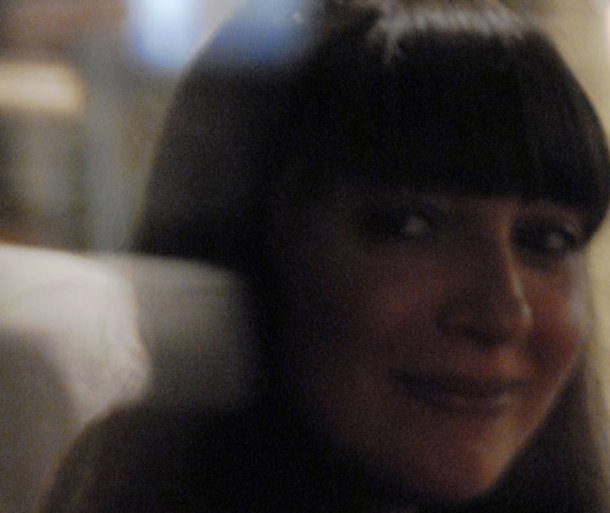Bouchra Khalili
Published16 Jun 2012

A Festa da Literatura e do Pensamento do Norte de África inicia-se a 22 de Junho com um debate em que participarão vários autores de blogs do Norte de África e Médio Oriente. Na impossibilidade de apresentar todos os autores e blogs fundamentais que são activistas fundamentais na cena política destas regiões vamos apresentar alguns.
Hoje, Bouchra Khalili, de Marrocos.
BOUCHRA KHALILI (Marrocos, 1975) estudou Cinema, na Sorbonne Nouvelle, e Artes Visuais, na École Nationale Supérieure d'Arts, Paris-Cergy. O trabalho de Khalili em vídeo, instalações mistas de média e impressões combinam uma abordagem conceptual com uma prática documental para explorar questões de nomadismo, existências clandestinas e a ’experiência emigrante‘, com uma especificidade para o destino dos migrantes, na medida em que, concretamente, resumem assuntos que são fundamentalmente regidos pela itinerância. No seu trabalho, ela conjuga linguagem, subjetividade, o mínimo de palavras, territórios e rotas de passagem, investigando a inter-relação entre as migrações contemporâneas e a história colonial e a geografia física e imaginária. O trabalho de Khalili tem sido amplamente divulgado em todo o mundo, incluindo recentemente no MoMA, como parte da exibição do filme "Mapping Subjectivity" (2011), na 10ª Bienal Sharjah (2011), na Marian Goodman Gallery (Paris, 2011), na Fundação Calouste Gulbenkian (Lisboa, 2011) e em La Triennale (Palais de Tokyo, Paris, 2012), entre outros.
Bouchra Khalili has devoted herself to video work, both in single channel and installation form, since 2002. The artist uses this medium for its impurity, which allows her to place her work at the very limits of cinema and the fine arts, documentary and experimental work, blurring the lines between these two practices. Her videos explore the Mediterranean area seen as a territory dedicated to a wandering, nomadic existence. She documents the places she passes through, their images and the images they generate. Khalili produces representations of these spaces’ mental dimension by placing them in an unusual perceptive experience, thus testifying to the contemporary reality of emigration and its stories.
For the Storytellers exhibit at the galerieofmarseille, Bouchra Khalili will present works produced in 2007 and 2008 between Paris, New York, Marseille and Istanbul. By combining physical and imaginary geography, Khalili aims to draw an alternative map of contemporary migratory trajectories. Purposefully mixing up topographic identifiers that might reveal the location of the areas she explores, Khalili’s undertakes an intensive practice of rearrangements, as much geographic as artistic and conceptual.
With Mapping Journey (videos and photographs, 2008), Khalili compares the lived experience of emigration with the flatness of geographic maps. Entrer dans l’Histoire (“Enter into History”, silkscreen on adhesive, 2008), which recalls the Arab calligram tradition, reveals an alternative map of Africa: one that describes the misunderstandings that weigh upon a continent that “has not fully entered history”.
Circle Line (video installation) suggests a possible nomenclature for immigration to the United States. On two screens, sentences excerpted from a questionnaire for green card applicants and fragments from a conversation with an illegal immigrant answer one another, while the soundtrack of a naturalization ceremony is played back on a third screen. Simultaneously, images of the city unfold one after another in hypnotic traveling shots.
This complex relationship between documentary and ghostly images, in different languages, of “in” and “off” sounds, of real or potential stories, is typical of Bouchra Khalili’s videos, most notably in the triptych Des Histoires Vraies – Straight Stories (video, 2006 (first part) and 2008 (second and third parts)). While the first part takes place between the south of Spain and the North of Morocco, the second part presented in the exhibition explores Istanbul, and more specifically, the Bosphore area. Like the Straight of Gibraltar, the Straight of Bosphore is simultaneously a physical border that separates two continents (Europe and Asia) and an imaginary one. But since the 1990’s, this intermediary zone has mostly become a labyrinth where migrants in transit wait before going further west. For most, the place that was intended as a temporary stop becomes permanent. Through the constant movement of spatial, visual and auditory disconnections, Straight Stories- Part 2 (3 single-channel videos, 2008) unveils a mental expedition that takes us to meet the people that haunt these places, and who confide their hopes to go or stay, to return home or continue their travels.
Artist Bouchra Khalili talks about the relevance of mapping and mapmaking to her work as part of the artists in conversation series during Iniva's Whose Map is it? exhibition.
